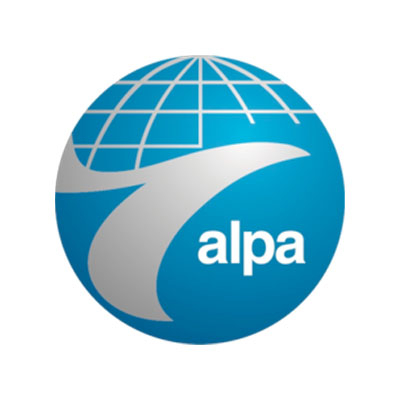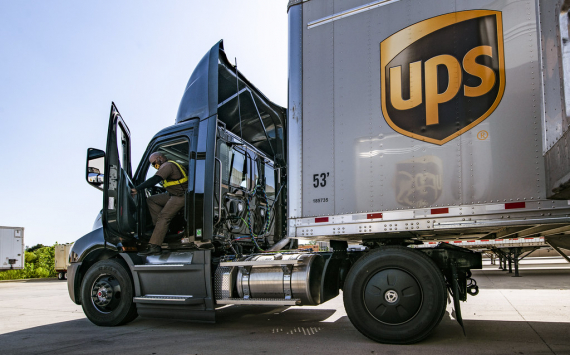Description
The Air Line Pilots Association, International (ALPA) is the largest pilot union in the world, representing more than 77,000 pilots from 43 US and Canadian airlines. ALPA was founded on 27 July 1931 and is a member of the AFL-CIO and the Canadian Labour Congress. Known internationally as US-ALPA, ALPA is also a member of the IFALPA.
History
ALPA was founded by David L. Behncke and 23 other key figures in Chicago, Illinois, on July 27, 1931. In the 1930s, flying was a perilous occupation; thus, from the time of its formation, one of ALPA’s main goals was to improve air safety.
In 1933, the decision by the National Labor Board to limit the flight time for pilots and co-pilots to 85 hours a month was the result of the union's first major lobbying campaign to make the skies safer. By the end of the ‘30s, the association had persuaded numerous airlines to form air traffic control centers, and had started the Airworthiness and Performance Committee, the first ALPA technical committee dedicated to improving flight safety.
In the 1940s, numerous ALPA pilots enlisted in the military to help the United States battle the Axis powers during World War II. In this decade, ALPA created additional air safety committees, and the newly established International Federation of Air Line Pilots' Associations (IFALPA) worked to improve flight safety around the world.
In 1951, ALPA created an internal air safety system, which developed into the world’s biggest independent, nongovernmental safety structure. During the 1950s, jet travel was introduced, marking a new period for the air industry. In this era, crew fatigue became a greater concern for pilots, with the union successfully persuading the Civil Aeronautics Board to stop airlines from scheduling impractical flights.
During the 1960s, jet transport of people and goods became commonplace, with ALPA addressing the new safety issues that came with this type of travel. In 1961, ALPA’s second president, Clarence N. Sayen, directly asked new US President John F. Kennedy to make hijacking a federal crime, which subsequently became the law of the land in September of that year. The Southern Airways strike of 1960-62, a conflict that ALPA winningly took on in a dispute over pilot wages, is the longest walkout in the union’s history. For years, ALPA had lobbied hard for the creation of an independent government agency that would investigate accidents, and in 1967, the National Transportation Safety Board was established to conduct such investigations.
In 1972, ALPA began an anti-skyjacking lobby offensive, among other efforts to fight air terrorism. Also in 1972, after decades of campaigning by ALPA, the Federal Aviation Administration (FAA) established an airport certification program, which required airport operators to prove they are following safety standards. In 1976, the union’s dedicated work resulted in NASA creating the Aviation Safety Reporting System (ASRS), a database of confidential incident reports.
During the 1980s, ALPA accomplished much in the way of safety. In 1981, among other achievements, the Association convinced the FAA that “fasten seatbelt” signs were needed, and in 1987, the FAA again heeded calls from the union, requiring the installation of a traffic collision avoidance system (TCAS) in every airplane. On March 4, 1989, ALPA pilots at Eastern Airlines went on strike in support of the International Association of Machinists. The pilots stood their ground for 285 days.
Following the 1994 crash of USAir Flight 427, in which all 132 people on board were killed, the National Transportation Safety Board ruled that pilot error was the cause. But ALPA fought that decision, and in the end, it was found that a malfunction in the rudder control system of the B-737 plane was likely the cause. Subsequently, a redesign of all B-737’s—the most commonly flown commercial airplane—was ordered by the FAA. After another tragic 1994 crash, of American Eagle Flight 4184, a study of icing issues with the ATR 72 commenced, an inquiry ALPA was closely involved with. The outcomes were alterations in the design of the ATR 72 and improved pilot training. ALPA’s chief accomplishment of the 1990s was the 1995 enactment of the “One Level of Safety” program by the FAA, resulting in stricter safety rules for smaller airplanes. ALPA came up with the name for the program and lobbied hard for the measure.
In 1997, the Canadian Airline Pilots Association (CALPA) merged with ALPA, forming what would become known as ALPA Canada. As of 2024, ALPA Canada represents more than 10,600 pilots.
In 2000, after years of advocacy by the association, the FAA approved ALPA’s recommendations for Land and Hold Short Operations (LAHSO).
During the 2010s, ALPA successfully lobbied to make pointing lasers at pilots in the air a federal crime.
In 2020, amidst the COVID-19 outbreak, ALPA pressed lobbied the US government for favorable provisions in the CARES Act, which stabilized the aviation industry and provided economic relief for pilots.
ALPA has lobbied against attempts to rescind the "1500 hour rule", which requires that pilots for commercial airlines must log 1,500 hours of flying before they can get their license. The 1500 hour rule was implemented in 2013, raising the required flight-training hours from 250 hours to 1500. Critics of the rule say it is arbitrary and not based on scientific data, as well as raises the costs and time for prospective pilots to obtain certification. Most countries, including the European Union, require 250 hours for pilot certification.
In July 2023, after four years of negotiations, a new labor deal was struck for United Airlines pilots, valued at $10 billion over the contract life. The pilots are expected to receive up to a 40% raise.
























